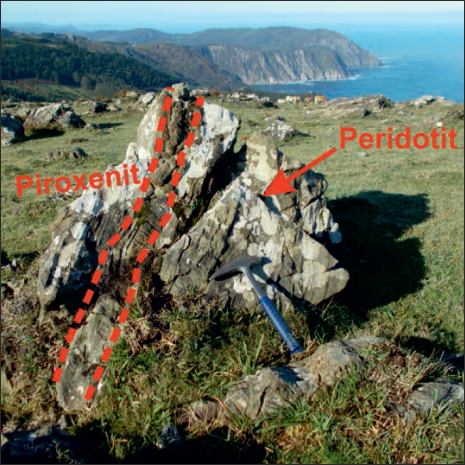Retrograde metamorphic fluids preserved in a Variscan subduction channel: a fluid inclusion study in ultramafic rocks of the Cabo-Ortegal Complex, NW Spain
Abstract
Subduction zone fluids play an essential role in large-scale transport processes between the down-going slab and the
overlying upper mantle, inducing earthquakes and metasomatism. Fluid inclusions, trapped in high pressure rocks, originating from such environments, yield direct information on the nature and chemistry of these fluids. Here a description is given of the microstructural characteristics of secondary fluid inclusions in the amphibole and clinopyroxene of pyroxenites from the Cabo-Ortegal Complex (COC, NW Spain). This description is based on fluid inclusion petrography, microthermometry and Raman spectroscopy. Pyroxenites in this study were sampled from both main mantle sections of the COC (i.e. Herbeira and Limo Massif) and show various degrees of amphibolization and serpentinization. The clinopyroxene and amphibole host three types of secondary fluid inclusions, which were trapped before and during serpentinization. Type I inclusions are hosted by amphibole and form a negative crystal shape, consisting of Ca-Mg-carbonates and volatiles such as N2 and CH4. The vapour phase contains nitrogen and methane in various relative proportions (CH4: 3–84 mol%, N2: 16–97 mol%). However, the irrelative concentration is consistent within a single healed fracture. Carbonates in this type of inclusion can be interpreted as products of a post-entrapment carbonation reaction which consumed CO2. Consequently, nitrogen and methane were enriched in the residual fluid. The originally trapped fluid in the amphibole could have been CO2-rich (min. 53.3–69.5 mol%), based on mass balance calculations.
Type II three-phase fluid inclusions are hosted by both clinopyroxene and amphibole with an elongated shape. They are halite-bearing aqueous inclusions with gas bubble-containing N2 and CH4 (N2: 73–87 mol%, CH4: 13–27 mol%). Homogenization of the bubble to the liquid proceeded between 270 and 290 °C. Cryogenic Raman spectroscopy confirmed no salt other than NaCl — verified by the presence of hydrohalite — with a salinity between 37–61 wt.% NaCl. Type III inclusions comprise irregular two-phase, liquid-rich aqueous inclusions with CH4 and,
subordinately, H2 in the vapour phase. Homogenization of the vapour phase to liquid occurred between 220 and 270 °C. No salt hydrate was detected (apart from water ice at –196 °C, where micro-thermometry yielded a salinity of 2.4–7.9 wt.% NaCl). This type (i.e. the two-phase inclusions) is the most abundant one, present in almost every sample and, from a textural aspect, is clearly associated with serpentine veins in clinopyroxene and amphibole. (Types I and II predate type III inclusions.) These inclusions can be interpreted as representatives of the latest, pervasive serpentinizing fluid. The results obtained in the present study indicated that the examined rocks of the ultramafic series of the COC have been involved in multistage fluid migrations, with different respective chemical processes during the retrograde path of the metamorphic evolution of the series in a Variscan subduction channel.
















